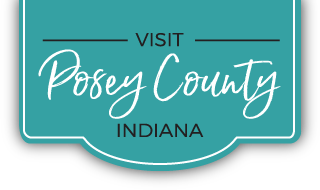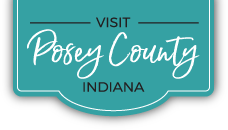Historic New Harmony – A Utopian Community
 Uniquely Utopian
Uniquely Utopian
New Harmony is home to three, and counting, attempts to create a Utopian community. Through those efforts, this idyllic, walkable village on the banks of the Wabash River has played a significant role in history, even contributing to the advancement of humankind.
As the name suggests, the idea of “harmony” is central to the town’s identity. It has grown, layer upon layer, for over two centuries, to become a harmonious mixture of history, the arts, the sciences, nature, and spirituality – a place where visitors can view the world through a different lens, and perhaps find a new kind of harmony in their own lives.
If you think of New Harmony as a museum, perhaps it most resembles the Smithsonian in Washington, D.C. Its contents are not confined to just one building, nor is it intellectually enclosed in just one area of interest. It is full of open spaces, and its attractions are varied. In some parts, you’ll find world-renowned art and architecture. In other parts, you can delve history and the natural sciences. The grounds themselves are beautiful, almost a botanic garden in their own right, and there are plenty of interesting stores, restaurants, spiritual centers, and places to stay nearby.

Historic
New Harmony’s past is rich and deep. It began as a Utopian enterprise by the Harmonists, an end-of-the-world religious community of German exiles with a charismatic leader in the early 1800s. Its second Utopian experiment was led by the pioneering industrialist and social reformer Robert Owen, who brought in many top thinkers and made it a world famous intellectual and scientific center for the young United States.
The Owenites, as they are called, and their dependents, played key roles in the advance of scientific knowledge, particularly in geology, geography, and other natural sciences; and were at the forefront of progressive education theory and practice, providing one of the first kindergartens in the U.S. and schooling for all classes of people. This small village on the Wabash was also a hotbed of the abolition movement, and in one of those unique twists of fate, New Harmony actually played a large part in the creation of the aforementioned Smithsonian Institution.
New Harmony’s third Utopian effort, led by philanthropist Jane Blaffer Owen, resurrected the town in the second half of the Twentieth Century. She and her Owen-decedent husband, Kenneth Dale Owen, restored many of the historic buildings, and built many renowned structures, such as the Roofless Church.
 Artistic
Artistic
In addition to revitalizing the town’s historic heritage, Mrs. Owen simultaneously worked to make New Harmony a place of new inspiration for all people. She commissioned world renowned architects, artists and theologians to collaborate on both small and grand projects throughout the community. Jane Owen also sponsored artistic workshops, exhibits and shows in all media, including painting, sculpture, dance and music.
Her efforts attracted others. Today, art and artisan craft are everywhere in New Harmony.

Spiritual
New Harmony was born as a religious community and over the years has evolved into a mostly non-denominational oasis for spiritual contemplation and renewal. Jane Owen believed that the positive impact of nature could move a secular site into the realm of a spiritual landscape, a sacred place. Such places as the Cathedral Labyrinth and Sacred Garden, Carol’s Garden, Paul Tillich Park, and Chapel of Little Portion are but a few of the treasures to be discovered during a visit. Each year New Harmony welcomes people of all faiths, and of none, from all over the world to experience the towns truly unique sacred places and be afforded an opportunity to contemplate their existence and perhaps deepen their spirituality.

Cultural
In addition to art, architecture and sacred places, Mrs. Owen also directed the construction of the Red Geranium Restaurant and New Harmony Inn Resort & Conference Center, a fine dining establishment and world class resort. Others, attracted to her legacy and the town’s history, are creating their own legacies with interesting places to eat, drink, shop, and lodge.
There is almost always something going on in New Harmony. A music festival, a dance recital, an antique or artisan fair, a street festival, wine tasting, theatrical play or other performance.
 Natural
Natural
For those who enjoy nature and the outdoors, New Harmony offers something fantastic for just about everyone. The town’s big attractions such as the Roofless Church, Carol’s Garden, and Our Lord’s Woods feature very well designed landscaping and gardens.
A casual stroll, a biking or golf cart ride through town will reveal many beautiful gardens and a lot of innovative landscaping.
The New Harmony Trail system winds through and around much of the town, the major sights, and along the scenic Wabash River. Visitors can park at the iconic Atheneum and start the trail there.
Harmonie State Park with all its natural beauty and 3,500 acres with outdoor activities is just a couple miles away.
 Small Town
Small Town
With its impressive mixture of history, arts, beautiful natural surroundings, spirituality, and vibrant social scene, many visitors are surprised to learn that with all its big city charm New Harmony’s population is less than 800. Authentic peace and quiet, friendly faces, and easy parking are found in abundance in this small Indiana town with Utopian ambitions.
Harmony
So check out the links above, check out what’s going on elsewhere in Posey County, and we hope to see you soon.


